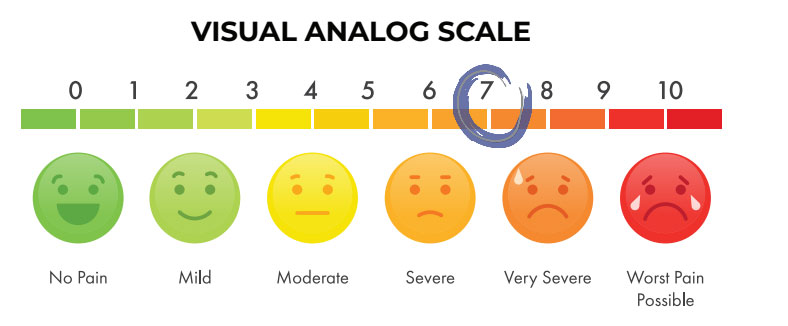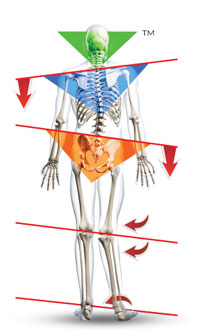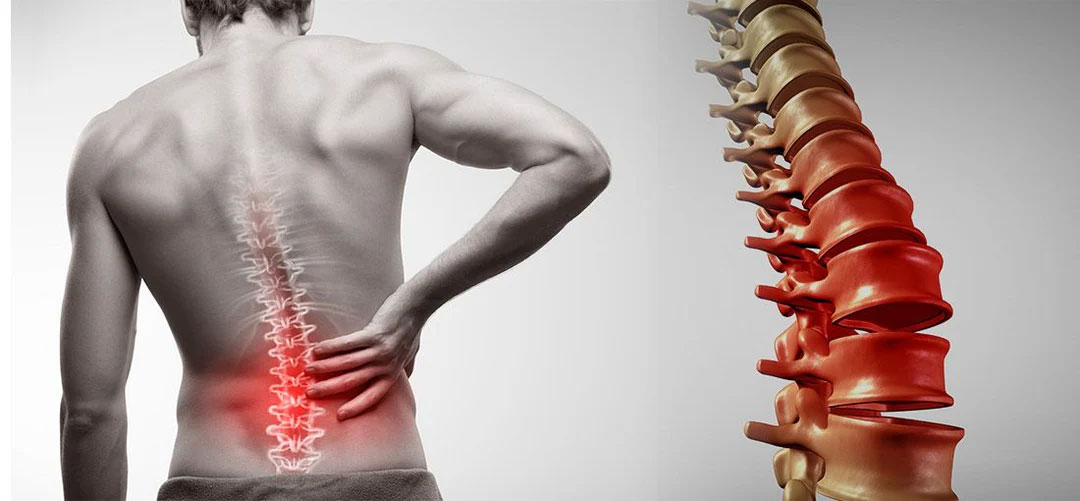A 52-year-old female elementary school teacher presented with persistent low back pain lasting over five years. The patient reported a pain intensity of 7/10 on the Visual Analog Scale (VAS), worsened by prolonged standing and walking during her teaching duties. Secondary complaints included occasional hip discomfort and fatigue in her lower legs. She had a history of plantar fasciitis and mild osteoarthritis in her knees. Previous treatments included physical therapy and over-the-counter pain relievers, which provided only temporary relief. Her primary goal was to regain comfort in daily activities without relying on medication
 Initial Exam Findings
Initial Exam FindingsPostural analysis revealed significant pronation in both feet, mild forward head posture, and anterior pelvic tilt. Gait evaluation showed uneven weight distribution, with excessive medial pressure on both feet. Palpation of the lumbar spine highlighted tenderness in the L4-L5 region and hypertonicity in the erector spinae. Rangeof-motion testing demonstrated reduced lumbar flexion and extension with mild pain. A foot scan using Foot Levelers technology confirmed bilateral overpronation and poor arch support. Orthopedic tests, including the Straight Leg Raise test, were negative for nerve impingement. However, the Modified Trendelenburg test suggested weakness in the gluteus medius, contributing to hip instability and lumbar strain.
Clinical ImpressionsThe findings suggested that the patient’s chronic low back pain was primarily mechanical in nature, exacerbated by faulty foot biomechanics and resulting kinetic chain dysfunction. Overpronation likely contributed to increased stress on the knees, hips, and lumbar spine, perpetuating her symptoms.
Treatment Plan/Methodology
The treatment plan emphasized a multi-faceted approach:
1. Spinal Adjustments: Chiropractic adjustments
addressed subluxations in the lumbar spine (L4-L5)
and sacroiliac joints, focusing on improving spinal
alignment and mobility.
2. Custom Orthotics: Based on the foot scan, I
prescribed the patient custom orthotics from
Levelers to correct overpronation, restore proper arch
support, and promote balanced weight distribution
during walking and standing.
3. Rehabilitation Exercises: I put the patient on a home
exercise program to strengthen her core and gluteal
muscles, including bird dogs, glute bridges, and sidelying leg raises.
4. Lifestyle Modifications: My recommendations
included ergonomic changes, such as using a
supportive chair at work and limiting standing time
without breaks.
After four weeks of care, the patient reported a marked improvement in her symptoms. Pain intensity decreased to 3/10 on the VAS, and she experienced less fatigue in her lower legs during the workday. By the end of eight weeks, the patient was pain-free during everyday activities, with occasional mild discomfort after prolonged standing. Follow-up gait analysis showed improved arch support and a more even weight distribution with the orthotics in place. Postural re-evaluation revealed a reduction in anterior pelvic tilt and improved lumbar flexibility. The patient resumed moderate physical activities, including light yoga and walking, which she had avoided for years.
Patient Comments
 The patient shared, “I’ve tried
many treatments for my back
pain, but this combination of
adjustments and orthotics
has been life-changing. I feel
more balanced when I walk,
and the pain that used to
dominate my day is gone.”
The patient shared, “I’ve tried
many treatments for my back
pain, but this combination of
adjustments and orthotics
has been life-changing. I feel
more balanced when I walk,
and the pain that used to
dominate my day is gone.”
Discussion of Results
This case highlights
the importance of addressing
biomechanical dysfunctions
in managing chronic low
back pain. Overpronation
and poor foot support
can significantly impact the
kinetic chain, causing stress on the lumbar spine and
associated structures. Integrating custom orthotics from
Foot Levelers was crucial in reducing the biomechanical
stressors contributing to the patient’s condition. At
the same time, spinal adjustments and rehabilitative
exercises helped restore functional mobility and
strength.
The success of this case reinforces the value of a
holistic, patient-centered approach in chiropractic care.
Future research could explore long-term outcomes of
combined chiropractic care and orthotics use in patients
with similar presentations.
This case demonstrates the transformative potential of
integrating Foot Levelers products into chiropractic care
to address chronic pain effectively and improve patients’
quality of life.
1. Spooner, S. K., et al. (2019). “The Effect of Custom Orthotics on
Low Back Pain and Functional Mobility: A Review.” Journal of
Chiropractic Research.
2. Nigg, B. M., & Wakeling, J. M. (2001). “Impact Forces and Foot
Pronation During Walking and Running.” Sports Medicine.
3. Kendall, F. P., et al. (2020). Muscles: Testing and Function with
Posture and Pain.

